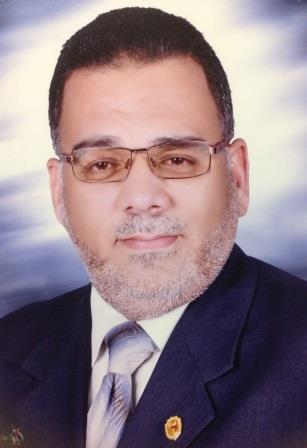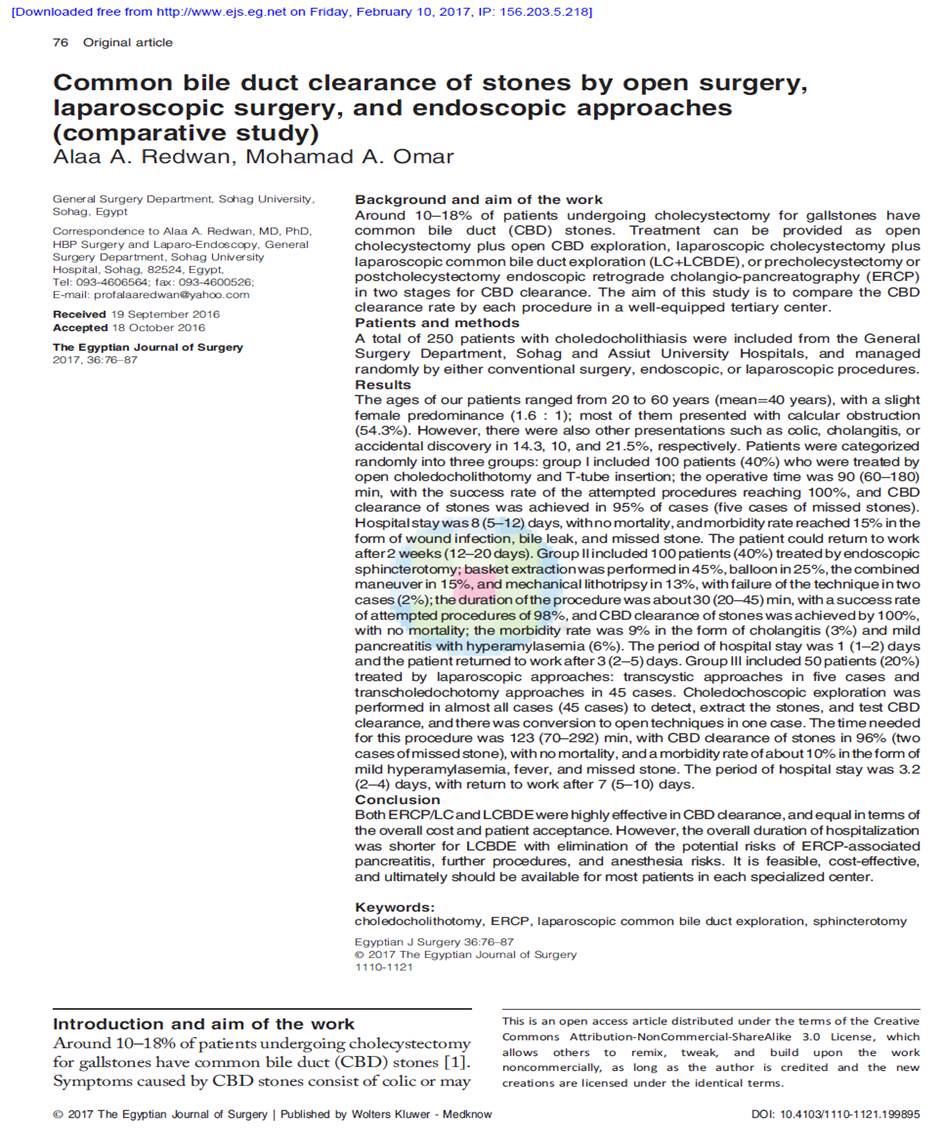Background and aim of the work
Around 10–18% of patients undergoing cholecystectomy for gallstones have
common bile duct (CBD) stones. Treatment can be provided as open cholecystectomy plus open CBD exploration, laparoscopic cholecystectomy plu
laparoscopic common bile duct exploration (LC+LCBDE), or precholecystectomy or
postcholecystectomy endoscopic retrograde cholangio-pancreatography (ERCP)
in two stages for CBD clearance. The aim of this study is to compare the CBD
clearance rate by each procedure in a well-equipped tertiary center.
Patients and methods
A total of 250 patients with choledocholithiasis were included from the General
Surgery Department, Sohag and Assiut University Hospitals, and managed
randomly by either conventional surgery, endoscopic, or laparoscopic procedures.
Results
The ages of our patients ranged from 20 to 60 years (mean=40 years), with a slight
female predominance (1.6 : 1); most of them presented with calcular obstruction
(54.3%). However, there were also other presentations such as colic, cholangitis, or
accidental discovery in 14.3, 10, and 21.5%, respectively. Patients were categorized
randomly into three groups: group I included 100 patients (40%) who were treated by open choledocholithotomy and T-tube insertion; the operative time was 90 (60–180)min, with the success rate of the attempted procedures reaching 100%, and CBD clearance of stones was achieved in 95% of cases (five cases of missed stones).
Hospital staywas8(5–12)days, withnomortality,andmorbidity rate reached15%inthe
form of wound infection, bile leak, and missed stone. The patient could return to work after2weeks (12–20days).Group II included100patients (40%)treatedbyendoscopic sphincterotomy;basketextractionwasperformed in45%,balloonin25%,thecombined maneuver in 15%, and mechanical lithotripsy in 13%,with failure of the technique in two
cases (2%); the durationof theprocedurewasabout30(20–45) min, withasuccess rate
of attempted procedures of 98%, andCBDclearance of stoneswas achieved by 100%,
with no mortality; the morbidity rate was 9% in the form of cholangitis (3%) and mild pancreatitis with hyperamylasemia (6%). The period of hospital stay was 1 (1–2) days and the patient returned to work after 3 (2–5) days. Group III included 50 patients (20%) treated by laparoscopic approaches: transcystic approaches in five cases and transcholedochotomy approaches in 45 cases. Choledochoscopic exploration was performed in almost all cases (45 cases) to detect, extract the stones, and test CBD clearance, and therewas conversion to open techniques in one case. The time needed for this procedure was 123 (70–292) min, with CBD clearance of stones in 96% (two casesofmissedstone), withnomortality,andamorbidity rate of about10%intheform of mild hyperamylasemia, fever, and missed stone. The period of hospital stay was 3.2 (2–4) days, with return to work after 7 (5–10) days.
Conclusion
BothERCP/LCandLCBDEwerehighlyeffective inCBDclearance,andequal in termsof
the overall cost and patient acceptance. However, the overall duration of hospitalizationwas shorter for LCBDE with elimination of the potential risks of ERCP-associated pancreatitis, further procedures, and anesthesia risks. It is feasible, cost-effective, and ultimately should be available for most patients in each specialized center.


